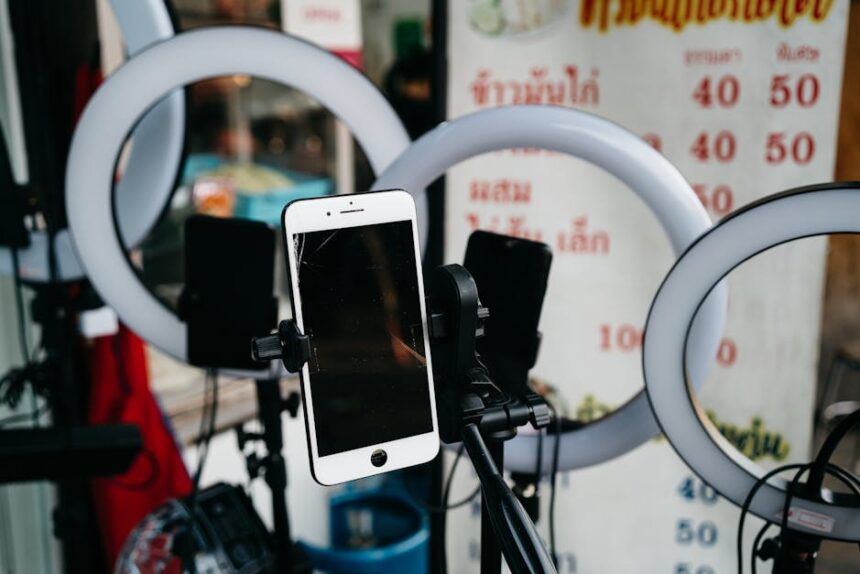Promoting Your Content: A Step-by-Step Playbook
1. Strategic Pre-Promotion: Laying the Groundwork for Amplification
Effective content promotion begins long before the publish button is even contemplated. It’s an intricate dance of strategy, research, and optimization, designed to ensure your content is not only discovered but truly resonates and achieves its intended objectives. This foundational phase is crucial for maximizing the return on your content investment.
The initial step involves a deep dive into understanding your audience and meticulously defining your content goals. Revisit your buyer personas with a promotional lens. Who exactly are you trying to reach with this specific piece of content? What are their preferred channels for information consumption? What types of content do they engage with most? Are they more responsive to video, long-form articles, infographics, or interactive tools? Understanding their pain points, interests, and online behavior will directly inform your promotional channel selection, messaging, and timing. Furthermore, clearly articulate what success looks like for this particular content asset. Is it increased organic traffic, lead generation, brand awareness, social shares, or backlinks? Quantifiable Key Performance Indicators (KPIs) are essential for measuring the efficacy of your promotional efforts later on. Without clear goals, your promotion becomes a shot in the dark, making it impossible to learn and iterate.
Next, conduct a thorough content audit specifically for promotability. Look at your existing content assets. Are there any evergreen pieces that can be updated, repurposed, or given a fresh promotional push? Identify any content gaps that your new piece aims to fill, and consider how this new content integrates with your existing content ecosystem. Think about how the new content provides unique value and stands out from the noise. Is it offering a new perspective, deeper analysis, or more actionable advice than what’s already out there? The inherent quality and utility of your content are the most powerful promotional tools you possess. High-quality content organically attracts shares, links, and discussions, but even the best content needs a strategic push.
SEO fundamentals are non-negotiable for promotability. Long before publication, integrate robust keyword research into your content creation process. Go beyond single, broad keywords and delve into long-tail keywords and intent-based queries. What specific questions are your target audience typing into search engines that your content can answer? Tools like Ahrefs, SEMrush, and Google Keyword Planner are indispensable for uncovering these opportunities. Once identified, strategically weave these keywords into your content naturally, avoiding keyword stuffing. Focus on on-page SEO best practices: craft compelling, keyword-rich title tags that entice clicks in search results; write concise and informative meta descriptions that summarize your content’s value proposition; structure your content with clear, hierarchical headings (H1, H2, H3) that improve readability for both users and search engine crawlers; optimize image alt text with descriptive keywords; and implement a strong internal linking strategy that connects your new content to relevant, authoritative pages within your own website, passing link equity and guiding users through your content journey. This internal linking not only boosts SEO but also enhances user experience by providing more context and related information, increasing time on site and reducing bounce rates.
Finally, consider the content format and its inherent adaptability for promotion. Is your content created in a format that lends itself well to various promotional channels? A long-form blog post, for instance, can be atomized into social media snippets, an infographic, a short video, an email series, or even a podcast episode. Planning for repurposing from the very beginning saves time and effort during the promotion phase. Think about creating ‘promotable content’ from the outset: content that is evergreen, highly visual, easily digestible, and inherently shareable. Interactive content, like quizzes, calculators, or polls, often sees higher engagement rates and is more likely to be shared. Pillar pages, which are comprehensive resources on a broad topic, are excellent for SEO and can serve as central hubs for various related content pieces, making them naturally promotable and link-worthy. The more versatile your content asset, the more ammunition you have for a diverse and multi-channel promotional campaign. This proactive approach ensures that every piece of content you produce is a strategic asset designed for maximum reach and impact.
2. Immediate Launch & Initial Distribution: Hitting the Ground Running
Once your content is polished, optimized, and ready for prime time, the immediate launch phase is critical for generating initial momentum. This involves leveraging your owned channels, initiating early outreach, and strategically deploying paid amplification to give your content a powerful opening surge.
Activating your owned channels is the first and most direct step. Your website or blog should be the primary distribution hub. Ensure your new content is prominently featured on your homepage, blog roll, or relevant landing pages. Consider a notification bar or a pop-up (used judiciously) to draw immediate attention. For existing subscribers, email marketing remains one of the most effective direct communication channels. Segment your email list to ensure the content reaches the most relevant audience segments. Craft compelling subject lines that create curiosity and clearly convey the value of clicking through. Personalize the email message, explain why this content is relevant to them, and include a clear, strong call to action (CTA). Don’t just send a link; provide a teaser, a key takeaway, or a benefit statement that encourages engagement. Automate a follow-up email for those who opened but didn’t click, or for those who engaged, offering further resources.
Social media activation requires a platform-specific approach. Avoid a one-size-fits-all mentality.
- LinkedIn: Share your content with professional insights. Tag relevant industry influencers or colleagues who might find it valuable. Participate in LinkedIn groups, sharing your content when it genuinely adds to a discussion. Use longer, more descriptive captions that highlight key takeaways.
- Twitter: Craft multiple tweets with different angles, quotes, and statistics from your content. Use relevant hashtags and tag relevant accounts. Consider Twitter threads for breaking down complex topics. Include engaging visuals (images, GIFs, short video snippets).
- Facebook: Utilize compelling visuals and ask questions to spark conversation. Share in relevant Facebook Groups (if permitted and adds value) and consider Facebook Stories for quick updates. Facebook Live can be used to discuss key points from the article.
- Instagram: Focus on visually appealing snippets. Use carousels to break down information, create short Reels or Stories with key takeaways, and direct users to the link in your bio. Instagram is excellent for showcasing the ‘human’ side of your content.
- Pinterest: Create beautiful, informative pins that link directly to your content. Pinterest is a visual search engine, so focus on strong imagery and keyword-rich descriptions. It’s particularly effective for ‘how-to’ guides, recipes, and DIY content.
- TikTok: For certain niches, short, engaging videos summarizing content points, or even ‘dueting’ with content, can be highly effective. Focus on trending sounds and challenges where appropriate.
Beyond your immediate network, early-stage earned media and outreach can provide significant boosts. If you have existing relationships with bloggers, industry journalists, or complementary businesses, reach out with a personalized email. Highlight why your content would be valuable to their audience, perhaps offering an exclusive quote or additional data. This could lead to a mention, a shared post, or even a guest post opportunity on their platform, extending your reach to their established audience. For highly newsworthy content, a targeted press release distributed through a reputable wire service can attract media attention. Engage with online communities, forums, and Slack groups where your target audience congregates. Share your content not as spam, but as a valuable resource that genuinely contributes to an ongoing discussion or answers a common question. Be an active participant, build trust, and then share your insights and content naturally.
Finally, consider paid amplification for an initial boost. Social media ads (Facebook/Instagram Ads, LinkedIn Ads, Twitter Ads) allow for incredibly precise audience targeting based on demographics, interests, and behaviors. Create multiple ad creatives and test different headlines and CTAs. Allocate a strategic budget for the initial days or week to reach a broader audience quickly. Search Engine Marketing (SEM) through platforms like Google Ads can place your content at the top of search results for specific, high-intent keywords, driving immediate, qualified traffic. Content discovery networks such as Outbrain and Taboola can place your content on reputable news sites and blogs, reaching users who are already in a content consumption mindset. While these require a budget, they can significantly accelerate visibility and initial engagement, providing data that can inform your long-term organic strategies. The key is to monitor performance closely and optimize your ad spend based on real-time data to maximize your return on ad spend (ROAS).
3. Ongoing Amplification & Sustained Growth: The Long Game of Content Promotion
Content promotion isn’t a one-and-done activity; it’s a continuous process that requires sustained effort, adaptation, and strategic expansion beyond the initial launch. This phase focuses on building long-term authority, engaging with your community, and continually finding new avenues for distribution and amplification.
SEO, particularly link building, becomes paramount for sustained growth. High-quality backlinks from authoritative and relevant websites are still one of the strongest signals to search engines that your content is trustworthy and valuable. Implement a diverse backlink acquisition strategy.
- Broken Link Building: Identify broken links on relevant, authoritative websites using tools like Ahrefs or SEMrush. Reach out to the webmaster, inform them of the broken link, and suggest your content as a suitable replacement.
- Skyscraper Technique: Find popular content in your niche that has many backlinks. Create a superior, more comprehensive, or more up-to-date version of that content, then reach out to the sites linking to the old content, suggesting they link to your improved version.
- Guest Posting: Continue to seek out opportunities to write guest posts for other reputable blogs in your industry. This allows you to include a contextual link back to your content within your author bio or the body of the article.
- Resource Pages: Many websites curate lists of useful resources. Identify these pages and pitch your content as a valuable addition.
- Competitor Analysis: Analyze your competitors’ backlink profiles to identify potential linking opportunities you might have missed.
- Digital PR: Beyond traditional press releases, focus on building relationships with journalists and media outlets. Offer unique data, expert insights, or compelling stories from your content that they can feature, leading to high-authority mentions and links.
- Schema Markup: Implement schema markup (structured data) on your pages. This helps search engines better understand your content, potentially leading to rich snippets in search results, which can increase click-through rates.
Community engagement and nurturing are vital for building a loyal audience. Don’t just publish and disappear. Actively respond to comments on your blog posts, social media, and other platforms where your content is shared. Answer questions, provide further insights, and thank users for their engagement. Consider hosting webinars, live Q&A sessions, or Twitter Spaces related to the themes of your content. This interactive engagement fosters a sense of community, positions you as an authority, and often leads to organic sharing. Encourage user-generated content (UGC) by inviting readers to share their experiences, case studies, or perspectives related to your content using a specific hashtag. UGC is highly credible and extends your reach through authentic advocacy.
Content repurposing and atomization should be an ongoing effort. Your initial long-form content is a goldmine for derivative assets.
- Infographics: Condense key statistics and concepts into visually appealing infographics.
- Short Videos: Create explainer videos, animated summaries, or talking-head videos breaking down complex topics into digestible chunks for YouTube, TikTok, Instagram Reels, etc.
- Quotes/Visual Snippets: Extract impactful quotes or statistics and turn them into shareable image quotes for social media.
- Carousels: For Instagram or LinkedIn, create multi-slide carousels that tell a story or break down a process step-by-step.
- Podcasts: Turn your article into a script for a podcast episode, or use it as a basis for a discussion.
- Presentations: Adapt your content into a SlideShare presentation for professional networking.
- Checklists/Templates: If your content is a “how-to,” create a downloadable checklist or template as a lead magnet.
- Email Series: Develop a multi-part email nurture series that dives deeper into different aspects of your content.
This cross-platform adaptation ensures your message reaches diverse audiences across their preferred channels, maximizing your content’s lifespan and impact.
Influencer marketing and strategic partnerships can dramatically expand your reach. Identify relevant influencers (micro, macro, and nano) whose audience aligns with yours. Look beyond follower counts; focus on engagement rates and authentic connection with their audience. Collaboration models can vary: sponsored posts where they feature your content, co-creation of content (e.g., a joint webinar or article), or affiliate marketing where they promote your content for a commission on leads/sales. Build long-term relationships rather than one-off transactions. Nurture these connections by engaging with their content and offering value before asking for promotion. Strategic partnerships with complementary businesses (e.g., co-hosting a webinar, cross-promotion in newsletters) can expose your content to entirely new, relevant audiences.
Advanced paid amplification strategies can refine and scale your efforts.
- Retargeting Campaigns: Target users who have already visited your website or engaged with your content. Remind them about the content, or offer related content or a next-step conversion opportunity (e.g., a free download, consultation).
- Lookalike Audiences: Based on your existing customer list or website visitors, social media platforms can create ‘lookalike’ audiences that share similar characteristics, allowing you to reach new, highly relevant prospects.
- Programmatic Advertising: Utilize demand-side platforms (DSPs) to buy ad space across a vast network of websites and apps, targeting highly specific audience segments based on real-time bidding, interest, and behavior. This can be effective for broad content distribution.
- Native Advertising: Content discovery networks (Outbrain, Taboola) and social media platforms offer native ad formats that blend seamlessly with the surrounding content, making them less intrusive and often more effective for content promotion.
Content syndication and distribution networks offer additional avenues. Publish your content (or adapted versions) on platforms like Medium, LinkedIn Articles, or Quora (answering questions with snippets and links to your full content). This exposes your content to built-in audiences on these platforms. Ensure your blog has an RSS feed to allow easy subscription and sharing. Explore content aggregators and news curation sites relevant to your niche that might pick up your content.
Building a content hub or pillar page strategy is a powerful long-term SEO play. A pillar page is a comprehensive, long-form content piece that covers a broad topic in depth. It internally links to various cluster content pieces (your detailed blog posts) that explore specific sub-topics within the pillar’s theme. This creates a robust internal linking structure, signals topical authority to search engines, and provides an excellent user experience by making it easy for visitors to navigate and delve deeper into related information. Pillar pages are inherently promotable due to their comprehensive nature and often attract more backlinks.
Leveraging PR and media relations for thought leadership involves proactively seeking opportunities for your content to be featured by journalists, industry publications, and news outlets. Craft compelling pitches that highlight the unique insights, data, or expert commentary found in your content. Build and nurture relationships with key media contacts. This can lead to interviews, quoted mentions, or even full feature articles that significantly amplify your content’s reach and lend immense credibility. Positioning your content’s author as a thought leader through speaking engagements or industry panels further amplifies the content’s message and boosts its perceived authority.
4. Measurement, Optimization, and Automation: Refining Your Promotional Machine
The final, continuous phase of content promotion is perhaps the most critical for long-term success: diligently measuring your efforts, using data to optimize your strategies, and leveraging automation tools to streamline processes. Without this feedback loop, your promotion remains a series of educated guesses rather than a data-driven science.
Key Performance Indicators (KPIs) are your compass. Revisit the goals you set in the pre-promotion phase. Common KPIs for content promotion include:
- Traffic: Overall unique visitors, page views, and traffic sources (organic search, social, referral, direct, email). Track which channels are driving the most visitors.
- Engagement: Bounce rate, average time on page, social shares, comments, likes, and mentions. This indicates how well your content resonates with the audience.
- Conversions: Leads generated (form submissions, downloads), newsletter sign-ups, sales, or other desired actions taken by visitors who consumed your content.
- Backlinks: The number and quality of unique referring domains linking to your content. This is a crucial SEO metric.
- Brand Mentions: How often your brand or content is mentioned across the web, even without a direct link.
- Rankings: Your content’s position in search engine results pages (SERPs) for target keywords.
Google Analytics is your primary data source for website performance. Dive into acquisition reports to understand traffic sources. Behavior flow reports can show how users navigate through your content. Set up conversion goals to track lead generation or other desired actions. Monitor your page’s performance for specific content, looking at metrics like average time on page and bounce rate to gauge engagement. Integrate Google Search Console to monitor organic search performance, impressions, clicks, and keyword rankings.
Social media insights and analytics tools provided by each platform (Facebook Insights, Twitter Analytics, LinkedIn Analytics) offer invaluable data on reach, impressions, engagement rates, click-through rates, and audience demographics for your social promotions. Use this data to identify your best-performing posts, optimal posting times, and the types of content and calls to action that resonate most with each platform’s audience. Email marketing platforms provide detailed reports on open rates, click-through rates, unsubscribe rates, and conversions from your content promotion emails. A/B test different subject lines, email copy, and CTAs to continually improve performance. For backlink monitoring, SEO tools like Ahrefs, SEMrush, or Moz provide comprehensive backlink profiles, allowing you to track new links, lost links, and the authority of referring domains.
A/B testing is essential for continuous optimization. Don’t assume what works; test it. Test different headlines for your blog posts and social media shares. Experiment with varied ad creatives and targeting parameters in your paid campaigns. Test different calls to action in your emails and on your content pages. Test the optimal time of day and week for posting on different social media channels. Analyze the results of your A/B tests to identify what truly drives engagement and conversions, then implement the winning variations. This iterative improvement process ensures your promotional efforts become increasingly efficient and effective over time.
Iterative improvement based on data is the cornerstone of a successful content promotion playbook. Regularly review your performance data (weekly, monthly, quarterly) against your KPIs. If a channel isn’t performing, adjust your strategy for that channel or reallocate resources. If a specific type of content promotion is excelling, double down on it. Use competitor analysis tools to see what promotional tactics your rivals are using successfully and learn from their strategies (and mistakes). Stay abreast of changes in platform algorithms and industry trends. The digital marketing landscape is constantly evolving, so your promotion strategy must be agile and adaptable.
Finally, leverage automation and specialized tools to streamline your content promotion workflows.
- Social Media Scheduling Tools: Platforms like Buffer, Hootsuite, Sprout Social, or Agorapulse allow you to schedule social media posts in advance across multiple platforms, saving time and ensuring consistent presence. They also provide analytics and often queue management.
- Email Marketing Automation: Tools like Mailchimp, HubSpot, ActiveCampaign, or ConvertKit automate email sequences, segment audiences, and personalize communications, ensuring timely delivery of your content to the right people.
- SEO Tools: Beyond keyword research, tools like Ahrefs, SEMrush, Moz, and Screaming Frog assist with technical SEO audits, backlink analysis, competitor analysis, and rank tracking, all of which inform your promotion strategy.
- CRM Integration: Integrating your content promotion efforts with your CRM (Customer Relationship Management) system (e.g., Salesforce, HubSpot CRM) allows you to track content consumption by individual leads and customers, providing insights for sales teams and personalized follow-up.
- AI Tools for Content Optimization/Generation: AI tools can assist with generating variations of headlines, meta descriptions, social media copy, or even initial drafts of short-form content derived from your main asset. They can also help with sentiment analysis for community engagement.
- Content Distribution Platforms: Explore tools like CoSchedule’s Headline Analyzer or promotional checklists to ensure all steps are covered. Outreach platforms can help manage your link-building and influencer outreach efforts.
By embracing measurement, continuous optimization, and the judicious use of automation, you transform content promotion from a manual chore into a scalable, data-driven system. This systematic approach ensures that your valuable content not only reaches its intended audience but also consistently contributes to your overarching business objectives, building brand authority, driving engagement, and generating tangible results.











